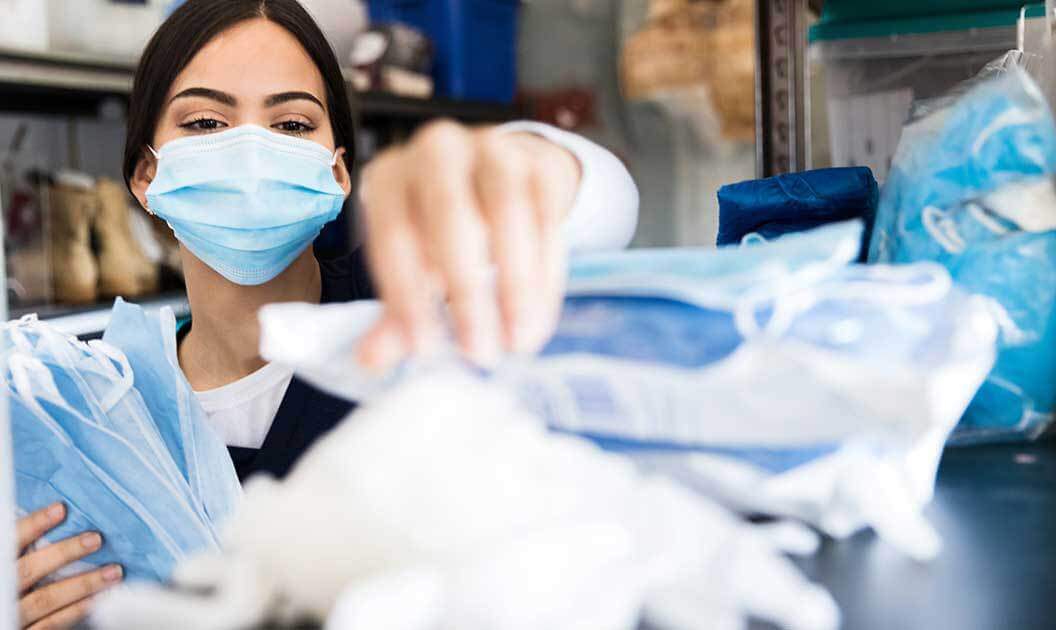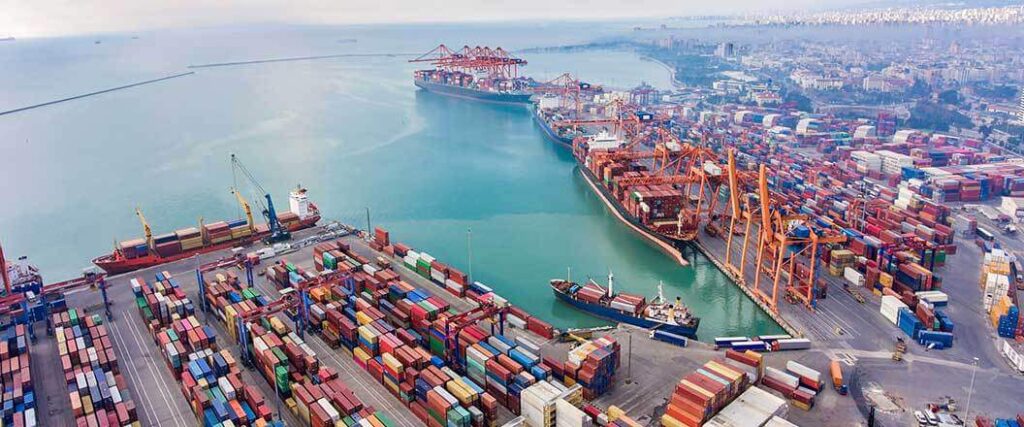
Taking the time to understand how to ship medical supplies overseas is an important skill you’ll need. There are numerous government regulations you’ll need to follow, as well as taking the time to pack your shipment properly. Fortunately, these challenging tasks are easily overcome and you’ll be able to ship your medical supplies in no time.
According to the Food and Drug Administration (FDA), you’ll need to perform the following tasks to ship medical supplies overseas:
Lastly, medical supplies need to be packed carefully using packing materials, cardboard boxes and in some cases, a pallet.
In our guide, we’ll show you how to ship medical supplies overseas safely and efficiently.
As a shipper, you’re allowed to ship medical supplies and equipment internationally. The United States exports medical supplies all over the world on a consistent basis. The data below shows an assortment of medical supplies that the U.S. exported in the past few years.
| Syringes, with or without needles | $858 Million |
| Pacemakers | $165.8 Million |
| Prescription Drugs | $3.1 Billion |
| Vaccines | $2.03 Billion |
Provided by OEC World and World’s Top Exports
Thanks to the U.S., people around the world can gain access to sensitive medical supplies that they need. To ensure that their goods get to another nation safely and quickly, many shippers turn to the services of a freight forwarder who organizes their shipments for them.


Despite how often medical supplies are shipped from the U.S., there are a few regulations that shippers are required to follow for them to send their goods off without incident. The regulations you’ll have to abide by are maintained and enforced by the FDA.
Medical supplies is a very broad term describing different types of products. Essentially, there are two types of medical supplies that the FDA regulates:
The regulations that the FDA places on these medical supplies vary based on the supply itself.
Any shipper that wants to ship medical supplies from the U.S. will need to obtain an FDA export certificate. Certificates are often requested by foreign importers to indicate that goods are safe and in compliance with FDA regulations.
If you’re shipping medical devices specifically, you’ll need to obtain an export certificate from the FDA’s Center for Devices and Radiological Health (CDRH). The CDRH provides four of the following export certificates:
You’ll be charged a $175 fee for the first certificate you obtain from the CDRH. For any subsequent certificates you obtain, you’ll have to pay a fee of $80. Another certificate associated with medical devices is called a Certificate for Device Not Exported from the U.S. (CDNE).
This certificate will need to be obtained when you ship goods that were manufactured in another country. This may be the case if you’ve imported for re-export.
To request this certificate, you’ll need to have achieved the following criteria:
For human drugs like prescriptions, you’ll need to apply for a certificate from the FDA’s Center for Drug Evaluation and Research (CDER). Certificates for pharmaceutical goods are called Certificates of Pharmaceutical Products (CPPs). All CPPs provided by the CDER can be applied for and obtained online.
Another document that you might need to provide when shipping drugs for human use is the Current Good Manufacturing Practice (CGMP). This document is only needed if the foreign regulator in the country shipping these supplies doesn’t accept a CPP.
While the FDA doesn’t require additional export documentation for human drug exports, you will need to provide additional export documentation for medical devices.
The following is a list of export documents along with the medical devices that correspond with them:
When filling out a Simple Notification, you’ll need to make sure you include some of the following information:
Having these documents ready will ensure that your goods will be able to make it past U.S. customs and safely onto the mode of transport that will take it to another country.
Lastly, you’ll need to take care of all record-keeping requirements regarding your medical exports. When dealing with medical devices under Section 801, you’ll need to keep all the documents that demonstrate your shipment meets the criteria under the section.
As for recordkeeping for goods under Section 802, you’ll need to keep records of devices that you shipped and to what countries they were sent. Record keeping for human drug exports are the same under Sections 801 and 802.

Once you’ve figured out which regulations you’ll need to for your medical supplies, you can consider which mode of transportation you’ll use to ship them. There are numerous factors that you’ll need to consider when picking a mode of transportation for your medical items.
These factors include things like:
Based on the factors above, your preferred shipping mode will change.
Ocean shipping services are the most common service used when goods need to be moved internationally. Not only is this a reliable shipping service, but it’ll also allow you to send extremely large shipments of freight within a shipping container. Most types of medical supplies don’t take up too much space.
Whether you’re using an entire TEU or Less-Than-Container (LCL) shipping options, you’ll be able to ship a large number of goods. The only downside to ocean freight shipping is the amount of time it takes for freight to travel. Taking into consideration the disruption caused to the supply chain by COVID-19, there is a good chance your medical supply shipment will be delayed.
Shipping medical equipment overseas by air is another option that you can take advantage of. Compared to ocean freight shipping, international air shipping is much faster. Depending on the shipping company you hire, your medical supplies can touch down in another country within one to ten business days.
This is much faster than the 30 to 40 days or more averaged by ocean freight services. International air freight is an excellent choice if your buyer in another country is in desperate need of medical supplies. The downside to this shipping option is that you won’t be able to send as much freight, and it will cost more.
To learn more about this service, check out our article on air freight forwarders.

Although a freight forwarder can help organize your shipment, you’ll still have the responsibility of actually packing your medical supplies before they are shipped. Packing your goods is the most important step of shipping medical supplies. Medical devices and drugs for human consumption are often delicate and should be handled with care.
The items you’ll need to use when packing and shipping medical supplies are:
These materials will allow you to give your medical supplies the proper protection they need to survive while in transit.
The packing process should start with you wrapping your medical supplies with packing material. Bubble wrap is the best packing material you can use when you wrap your medical instruments or human drug products.
A good rule of thumb to go by is to wrap your medical supplies two to three times. You can keep the bubble wrap from becoming unwrapped by taping it closed with packing tape. Another option you can use when wrapping human drugs is to use a ziplock bag.
Once secured in packing material, you can focus on placing your medical supplies inside a box. Medical equipment can come in different dimension varieties, so you’ll need to obtain a cardboard box that will fit it. Very fragile medical equipment and small parts might require a special foam-padded cardboard box to hold them in.
Human drugs are already contained in some types of packaging like pill containers such as:
When you place human drugs in a box, you have to make sure that they’ll stay secured in place rather than bouncing around. You can secure human drugs using a variety of packing materials, as well as with the use of a corrugated cardboard box.
After your medical supplies are packed safely and securely within the box you’re shipping them in, you only need to close the box. This can be done using packing tape to seal all of the flaps. After completing this step, you only need to place the shipping label on the box.
Palletizing your medical supplies after you’ve boxed them is one option you can explore. Both air and ocean shipments can accommodate palletized freight. A palletized load will keep your medical supplies secured together and provide a much sturdier base for your goods than shipping them as non-palletized freight.
If you choose to palletize your shipment of medical supplies, follow the steps below:
These steps that we’ve listed are only the general rules to follow when palletizing. That said, these steps for palletizing your medical shipments might slightly vary based on the requirements given to you by the buyer and carrier. While palletizing has its benefits, you might find it unnecessary if you’re not shipping extremely large quantities of medical supplies.
USA Freight Forwarding Services can organize your shipment of medical supplies using a mode of transport that suits your needs. We also provide in-depth industry knowledge on organizing exports and imports.
We offer a variety of freight forwarding services aimed at helping you ship your goods with ease. No matter what type of freight you’re shipping, we can offer the following services:
Ocean freight shipping is a reliable way to move goods across the world, but international air will help you transport them faster if you’re operating within tight time constraints. Our consulting services will allow you to learn more about the freight forwarding process and you’ll learn your responsibilities as a shipper.
Contact us to get started today or call us at (866) 941-8081 to get more information on our services.
